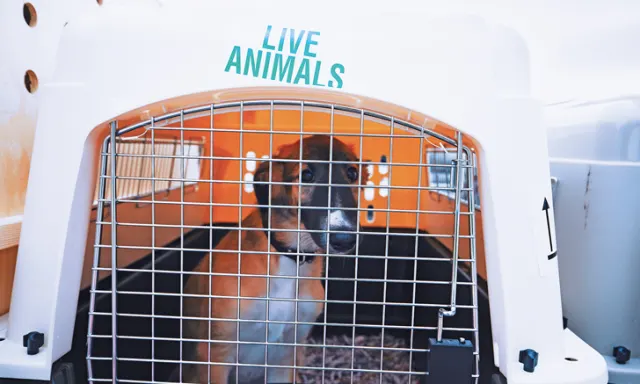The 5 Freedoms at 40,000 Feet
Brian A. DiGangi, DVM, MS, DABVP, University of Florida

In the Literature
Ghandour I. Transporting small animals by air: welfare aspects. Companion Animal. 2017;22(5):284-288.
The Research …
Air transportation of companion animals is increasingly common. Complex regulations have been designed to protect animal welfare and ensure a safe journey. This report offered practical insight for clinicians counseling pet owners through the air travel process. International air travel guidelines, including detailed recommendations for species-appropriate housing during flight, were presented.1
In the United States, caretakers must comply with federal and state regulations and individual airline policies.2 Many guidelines and regulations have a foundation in the 5 freedoms of animal welfare.3
The 5 freedoms include:
Freedom from hunger and thirst
Freedom from discomfort
Freedom from pain, injury, or disease
Freedom to express normal behavior
Freedom from fear and distress
These principles can serve as a useful framework to assess welfare relating to animal transportation.
Research that investigated the effects of air transportation on companion animals was reviewed. Although sparse, the data provided the basis for regulations that ban acepromazine use because of concerns about safety at high altitudes and lack of efficacy. Use of medical sedatives is also banned, although this has been based on limited studies; more comprehensive studies would be beneficial.
Studies of stress responses during flight suggested that dogs may be most stressed during takeoff and landing and for as long as 72 hours after flying; long-term effects were minimal.4 Incidences of pet loss, death, illness, or injury aboard flights in the United States are extremely low, although brachycephalic breeds are at a significantly higher risk for death as compared with other breeds.5
Planning for in-flight care should include assessment of potential environmental stressors (eg, temperature extremes, flight transfers), individual animal stress reduction (eg, pheromones, toys, treat dispensers), and acclimation to the travel crate before departure.
Beyond determining a pet’s physical and mental fitness for travel, the clinician plays a key role in guiding owner decisions about whether to transport an animal by air, how to follow regulations, and how to mitigate the pet’s stress.
… The Takeaways
Key pearls to put into practice:
The welfare implications of air travel and its alternatives should be evaluated, as should whether the 5 freedoms can be ensured.
Applicable international, federal, state, and airline regulations should be considered.
Animal stress can be reduced by acclimating the pet to confinement before travel, promoting comfort and relaxation during the journey, and preparing for environmental extremes.